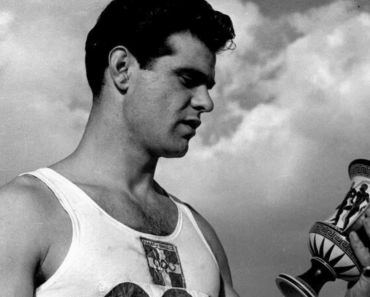For millennia, civilisation has been fascinated with the spectacle of elite athletes and competitors who can accomplish feats that the ordinary person can only dream of. The desire for high-quality entertainment in a venue that adequately suits the viewing experience has only grown in the last 150 years. In that time, stadiums have become increasingly high-tech, and tailored towards optimising how every fan can absorb the action of their favourite players. From the Colosseum to today’s cutting-edge arenas, the history of these spaces is a story of constant innovation. But what might they evolve to look like in the future?
Some of the earliest traces of spectating at elite sporting competitions can be found in the Stadium at Olympia which held the earliest version of the Olympic Games in honour of the Greek Gods, as far back as the 6th century BC. Even then, the arena is said to have held up to 45,000 people, a figure that exceeds many modern sports grounds. A few hundred years later in AD 80, the Roman Colosseum was first unveiled. This iconic amphitheatre was the site of gladiatorial battles, animal hunts, and public spectacles, housing as many as 80,000 viewers. Moreover, the architectural grandeur of the establishment is still marvelled at today. Millions of tourists flock to visit the historic monument every year to pay respect to an incredible aesthetic and functional feat of engineering.
In a more modern era, some of Europe’s most popular sports today had humble beginnings, being played on open fields in front of only as many spectators as could stand around the borders of the playing field to catch a glimpse of the action. Cricket, football, and rugby began with no stands at the end of the 19th century, but as popularity and demand grew, seating became increasingly available for the major teams. Concrete and wood were the materials used for many football grounds around the UK before the First World War. Thereafter, steel became progressively more important in providing seating and organisation in the stands. Yet, following the destruction caused by bombings in the Second World War, an opportunity to modernise these spaces was seized. For example, Old Trafford football ground has had floodlights since 1957—a state-of-the-art technological implementation that was a giant leap forward in the fan and playing experience. Nowadays, this is commonplace in sports grounds around the world and has revolutionised the viewing experience from the sporting optics of the contest to the practical times of play it has allowed us to access.
Sporting stadiums in both the UK and abroad have continued to grow ever since, permitting fans unprecedented access to the action. Enormous video displays, Wi-Fi connection, a range of entertainment and food options, and game day access routes to the ground are all almost now taken for granted in a visit to any major sporting stadium worldwide. Luxury suites and corporate boxes provide another level of comfort for those with the means to pay. Every detail of a modern stadium from acoustic clarity to sight lines has been painstakingly considered and planned to enhance the fan experience and create an exciting atmosphere. The more recent advent of Sensory and Inclusion Rooms has given fans access to live fixtures in a more controlled, calm environment catering to specific sensory needs through soundproofing, adjustable lighting, and other accommodations. Indeed, the Indiana Fever Sports Performance Center is planned to open in time for the 2027 WNBA season and will contain an incredible array of both player and fan amenities. This will include two full-sized courts, a team store, a state-of-the-art strength and conditioning suite, a recovery and rehab room (with a sauna, steam, and heat room as well as multiple hydrotherapy pools and infrared light therapy options), a private outdoor practice courtyard, mental performance spaces, a podcast and content production studio, and even hair and nail services, and childcare facilities. What would the athletes of Ancient Greece think of that?
However, a number of stadiums have seen what was planned as a space dedicated to a specific sport transformed into the site of another entertainment spectacle, even if only for a one-off event. Tottenham Hotspur Stadium has been the UK visiting site of the NFL beginning in 2019, hosting at least two games per year (with the exception of 2020 and 2021 due to COVID-19 restrictions) for the last three years. The stadium has an in-built artificial turf that lies underneath the grass playing field used for the Premier League footballers. The turf is retractable, meaning that the ground can easily be changed to accommodate the playing needs from one week to the next. But this is not the only example in the UK of such a repurposed use in a stadium: Lord’s Cricket Ground saw the Olympic Archery on its turf in 2012, the London Stadium (ex-Olympic Stadium) became the home ground of West Ham football club after the Olympic Games, and Paris La Défense was transformed from rugby club Racing 92’s home ground to a Taylor Swift concert venue, and then into the 2024 Paris Olympic and Paralympic Swimming arena in just 60 days!
Yet, this repurposing of large sporting venues is not without precedent. The ‘Live Aid’ concert at Wembley Stadium in 1985, with 72,000 live viewers and roughly 1.9 billion people tuning in, is arguably one of the most significant moments in British cultural history given its reach and philanthropic significance, raising between £40 and £50 million. Wembley is not alone in its accommodation of music performances. Sports grounds up and down the country have played host to celebrity musicians in a bid to bolster their finances as it becomes increasingly difficult to remain financially viable owning acres of land that are unprofitable in the ‘off-season’. Even the Colosseum has been used for this purpose in recent years!
Whether it be out of pure necessity to remain financially afloat, or in a bid to bring fans closer than ever to the sport and players that they love, stadiums around the world are changing. Hyper-modern technology used for player performance and training is only a part of this. Ultimately the paying pundit is who the stadium owners and developers must appeal to, the changes they make in the infrastructure and design of their grounds will continue to be at the cutting edge of live entertainment and their renovations can only be expected to become bigger and bolder in the coming years. As fan expectations continue to grow, future stadiums will likely incorporate even more immersive technologies like augmented reality, artificial intelligence and eco-friendly innovations. Stadiums will not just be casual viewing platforms for a match–they will become all-encompassing entertainment hubs.







